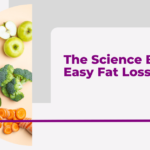The ketogenic (keto) diet has gained massive popularity for weight loss, mental clarity, and improved energy. But is it right for you? Before jumping in, it’s crucial to understand how keto works, its benefits, risks, and whether it fits your lifestyle.
This guide breaks down everything you need to know—science-backed facts, meal ideas, and expert tips—to help you decide if keto is a smart choice for your health goals.

What Is the Keto Diet?
The ketogenic diet is a very low-carb, high-fat, moderate-protein eating plan designed to shift your body into ketosis—a metabolic state where you burn fat for fuel instead of glucose (carbs).
Macronutrient Breakdown (Standard Keto):
- 70-80% Fat (avocados, olive oil, nuts, butter)
- 15-20% Protein (meat, fish, eggs)
- 5-10% Carbs (non-starchy veggies, small portions of berries)
📌 Daily Carb Limit: Typically 20-50g net carbs (varies per person).
How Does Keto Work?
- Reduces carbs drastically → lowers blood sugar & insulin.
- Liver produces ketones (from fat) as an alternative energy source.
- Body enters ketosis (usually within 2-7 days).
- Burns stored fat for fuel, leading to weight loss.
Potential Benefits of Keto
✅ Weight Loss – Burns fat efficiently, reduces hunger hormones.
✅ Stable Energy – No sugar crashes; ketones provide steady fuel.
✅ Improved Mental Focus – Ketones may enhance brain function.
✅ Blood Sugar Control – Helps with type 2 diabetes & insulin resistance.
✅ Reduced Inflammation – May benefit autoimmune conditions.
Possible Side Effects & Risks
⚠️ “Keto Flu” (First 1-2 weeks): Fatigue, headaches, cramps (due to electrolyte loss).
⚠️ Digestive Issues – Constipation (low fiber) or diarrhea (fat adaptation phase).
⚠️ Nutrient Deficiencies – Lack of fruits, grains, and legumes may lower vitamins/minerals.
⚠️ Not for Everyone – Risky for pregnant women, kidney disease patients, or those with a history of eating disorders.
Foods to Eat & Avoid on Keto
✅ Eat More Of:
- Healthy Fats: Avocados, olive oil, coconut oil, butter, nuts.
- Protein: Eggs, fatty fish (salmon), chicken, beef, tofu (in moderation).
- Low-Carb Veggies: Spinach, broccoli, zucchini, cauliflower.
- Dairy: Cheese, Greek yogurt (unsweetened), heavy cream.
❌ Avoid:
- Sugary Foods: Soda, candy, pastries.
- Grains & Starches: Bread, rice, pasta, potatoes.
- High-Carb Fruits: Bananas, grapes, mangos (small berries are okay).
- Processed “Keto” Junk: Some keto bars/shakes contain hidden carbs.
Sample Keto Meal Plan
Breakfast: Scrambled eggs with spinach & avocado.
Lunch: Grilled chicken salad with olive oil dressing.
Dinner: Salmon with roasted asparagus & butter.
Snacks: Cheese cubes, almonds, celery with almond butter.
📌 Pro Tip: Drink bone broth for electrolytes to avoid keto flu!
Is Keto Sustainable Long-Term?
- Short-term (3-6 months): Great for weight loss & metabolic reset.
- Long-term: Some thrive, but many find it too restrictive.
- Alternative: Cyclical keto (5-6 days keto + 1-2 higher-carb days).
Who Should Avoid Keto?
❌ People with pancreatic, liver, or thyroid issues.
❌ Those with a history of disordered eating.
❌ Athletes needing high-intensity fuel (carbs for performance).
Final Verdict: Should You Try Keto?
✔ Try it if: You want rapid fat loss, better mental clarity, or blood sugar control.
✖ Skip it if: You love carbs, struggle with restriction, or have certain health conditions.
Consult a doctor or dietitian before starting, especially if you have medical concerns









